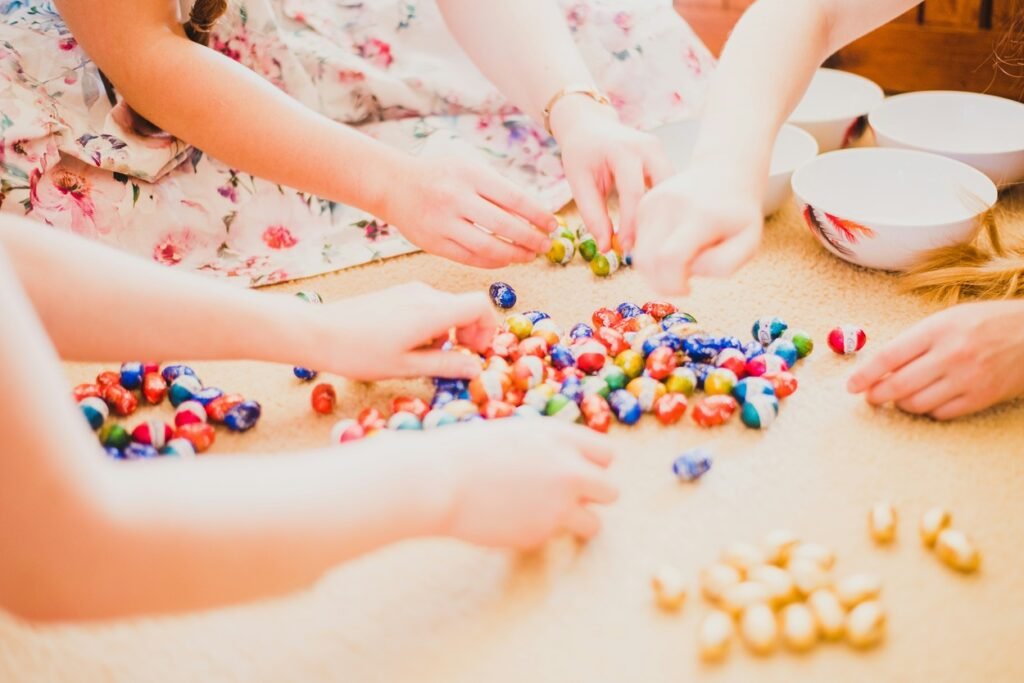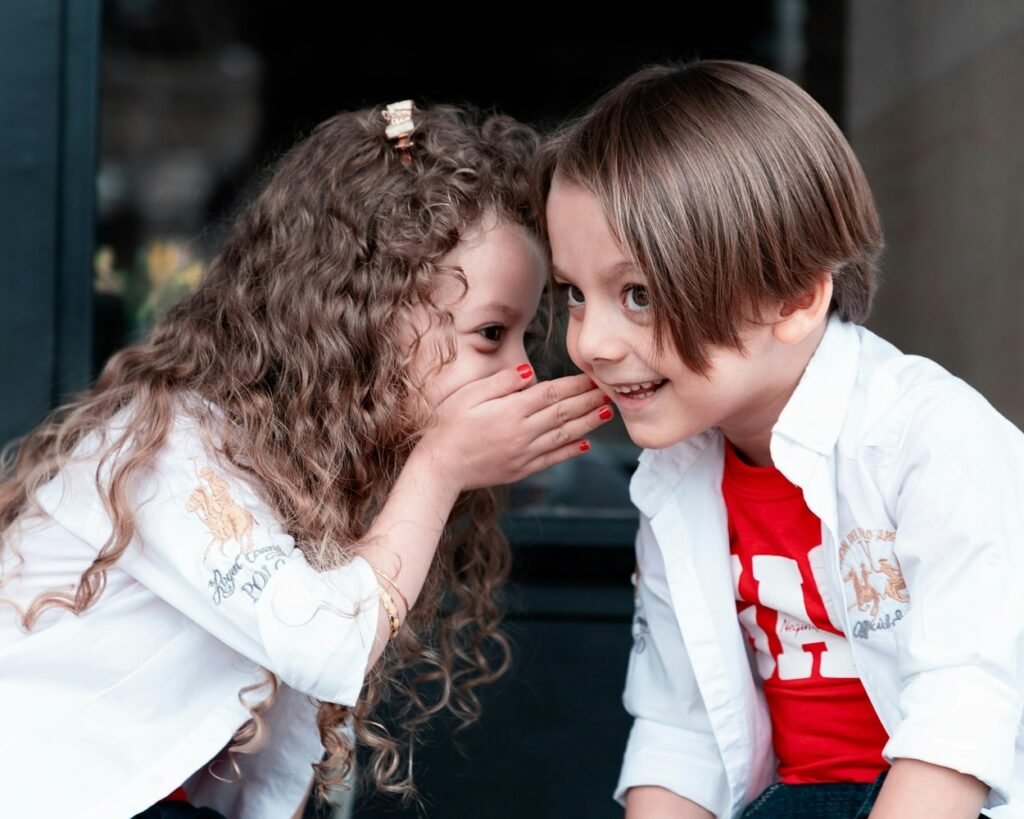Parenting is a wild ride, isn’t it? One minute, your adorable little munchkins are snuggling up for story time, and the next, they’re engaged in an epic battle over who gets to play with the red fire truck. As a parent of a 5.5-year-old boy and a 4.4-year-old girl, I’ve navigated my fair share of sibling squabbles.
One of the biggest lessons we’ve tackled together is the concept of sharing. Here’s how we’ve managed to turn these tiny turf wars into valuable life lessons.
The Sharing Struggle Is Real
Let’s face it, asking a toddler to share is like asking a cat to take a bath—possible, but not without some serious resistance. Kids are naturally egocentric. Their world revolves around their needs, their wants, and their toys.
So, when you introduce the idea that their prized possessions might be enjoyed by someone else, it’s bound to cause some friction.

Start with Small Steps
As parents, my partner and I realized early on that expecting our 5.5-year-old son and our 4.4-year-old daughter to immediately grasp the idea of sharing was unrealistic. Instead, we took a gradual approach, starting with small, manageable steps that made the idea of sharing less intimidating and more fun. Here’s how we planted the seeds of generosity in our little ones, one small step at a time.
Introduce the Concept Early: With my son, we started talking about sharing before his sister was even born. We’d practice with stuffed animals and toy cars, making a game out of passing them back and forth. When his sister arrived, the groundwork was already laid.
Use Everyday Opportunities: When you’re eating snacks, turn it into a sharing exercise. “Can you one of your crackers with mommy?” or “Would you like to share a piece of your apple with your sister?” These small moments build the foundation of generosity.
Model Sharing Behavior
To teach them the importance of sharing, we made sure to lead by example, showing them through our actions that sharing isn’t just a rule to follow, but a way to build connections and show kindness. Here’s how we’ve turned our everyday routines into lessons in generosity.
Monkey See, Monkey Do: Toddlers are master imitators. If they see you sharing with others, they’re more likely to mimic that behavior. Whether it’s sharing your dessert with your partner or giving a helping hand to a neighbor, let your kids see sharing in action.
Include Siblings: Our family movie nights are a prime example. When my daughter wants to hold the remote (a high honor in our household), we take turns. “Okay, it’s your brother’s turn to choose, then it will be your turn next.” This helps them understand that sharing means everyone gets a chance.
Create Sharing Opportunities
One of the most effective ways we’ve found to teach our kids to share is by creating opportunities for them to practice this valuable skill. Whether through playdates, group activities, or family traditions, these opportunities provide a natural and engaging environment for our kids to learn the joys and benefits of sharing.
Here’s how we’ve woven sharing opportunities into the fabric of our daily lives.
Playdates and Group Activities: Organize playdates where sharing is a necessity. Whether it’s building a LEGO fortress or playing a board game, these group activities teach kids that playing together is more fun than playing alone.
Sharing Circle Time: We have a little tradition during our family gatherings where each child gets to bring a favorite toy to share. They take turns explaining why they like the toy and then let the other kids play with it. This not only encourages sharing but also builds their communication skills.

Praise Generously
If there’s one secret weapon in the parenting arsenal, it’s the power of praise. Positive reinforcement can work wonders, especially when teaching tricky concepts like sharing. By generously praising our kids’s efforts to share, we’ve found that they’re more motivated to repeat the behavior.
Here’s how we’ve used praise to nurture a spirit of generosity in our household.
Positive Reinforcement: When you catch your child sharing, make a big deal out of it. “Wow, that was so kind of you to let your sister play with your truck! I’m really proud of you.” This strengthens the behavior and makes them feel good about their actions.
Sticker Charts and Rewards: We introduced a sticker chart for good behavior, and sharing is a big-ticket item. Once they earn a certain number of stickers, they get a small reward. This not only motivates them but also makes sharing a part of their routine.
Addressing the Challenges
Every challenge brings a possibility for growth and learning. From handling refusals to mastering the art of negotiation, we’ve found ways to navigate these obstacles with patience and creativity.
Here’s how we tackle the inevitable challenges that arise when teaching our kids to share, turning potential conflicts into valuable life lessons.
Handling Refusal: There will be times when your toddler outright refuses to share. It’s important to stay calm and patient. Explain why sharing is important and how it makes others feel. Sometimes, a simple, “Let’s find another toy for your sister while you play with this one” can defuse the situation.
The Art of Negotiation: Encourage your kids to express their feelings and negotiate. “Can I play with the doll for five more minutes, and then you can have a turn?” This not only teaches sharing but also valuable problem-solving skills.
Lead by Example
Little kids closely observe everything we do, from how we handle disagreements to how we treat others. This makes it crucial for us to model the behavior we want to see in them, including sharing. By demonstrating sharing in our everyday interactions, we provide a living example for our kids to follow.
Here’s how we use our own actions to teach the important lesson of sharing, showing them that generosity starts at home.
Sharing Your Time: As parents, our lives are a constant juggling act. Show your kids that sharing isn’t just about toys; it’s also about time and attention. If you’re playing a game with one child, make sure to include the other or promise to spend one-on-one time with them later.
Sharing Responsibilities: Involve your kids in sharing household chores. My son loves helping with setting the table, while my daughter enjoys watering the plants. This teamwork approach shows them that sharing responsibilities can be rewarding and fun.
The Role of Empathy
By fostering emotional understanding, we’ve found that sharing becomes a natural extension of their desire to connect and be kind to others.
Here’s how we’ve integrated empathy into our daily parenting to encourage a more generous and compassionate spirit in our kids.
Building Emotional Understanding: Teach your kids to recognize and respect the feelings of others. When my daughter cries because her brother won’t share, we talk about how it feels to be left out. Encouraging empathy helps them understand the consequences of their actions.
Story Time Lessons: Books are a great way to teach empathy and sharing. Stories where characters learn to share and the positive outcomes that follow can resonate deeply with toddlers. Some of our favorites include “Llama Llama Time to Share” by Anna Dewdney and “The Rainbow Fish” by Marcus Pfister.

Patience is Key
Teaching toddlers to share is a marathon, not a sprint. There will be setbacks and triumphs along the way. Patience and consistency are your best allies. Sometimes it feels like we’ve taken one step forward and two steps back, but with time and persistence, we’ve seen progress. Remember, every effort you make to teach sharing is a step toward raising compassionate, generous individuals.
Make a big deal out of these successes—give high fives, cheer, and maybe even do a happy dance. Acknowledging and celebrating progress not only boosts their confidence but also reinforces positive behavior. It’s these little celebrations that make the journey worthwhile and show your kids that sharing is something to be proud of.
Conclusion
In the grand adventure of parenting, teaching your toddler to share can feel like a Herculean task. But with patience, persistence, and a little bit of creativity, it’s entirely possible. Remember, you’re not just teaching them to share their toys—you’re equipping them with skills that will help them navigate relationships and life with kindness and empathy.
So, buckle up, embrace the chaos, and cherish the moments of triumph. After all, the best lessons in life are often learned through the beautiful messiness of family.
And if all else fails, just remember: chocolate chip cookies make excellent bribes. Happy parenting!
